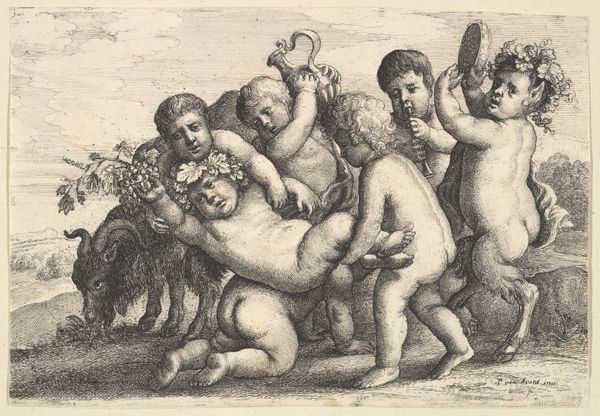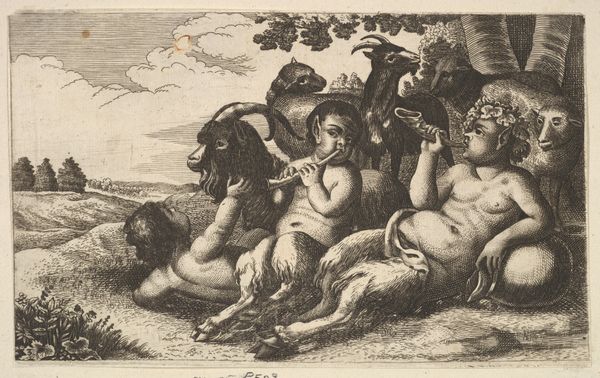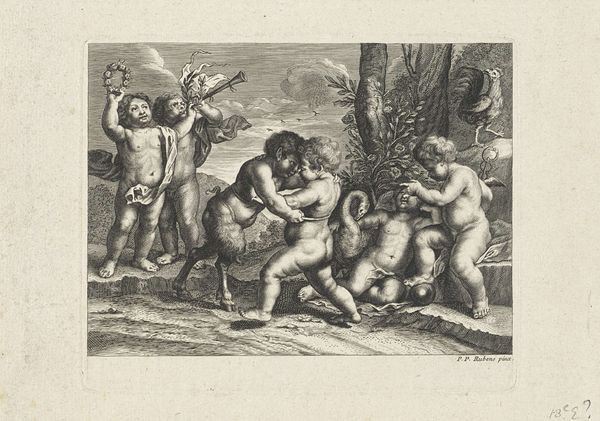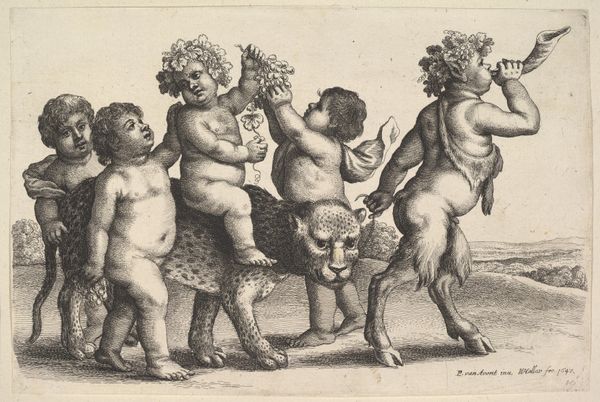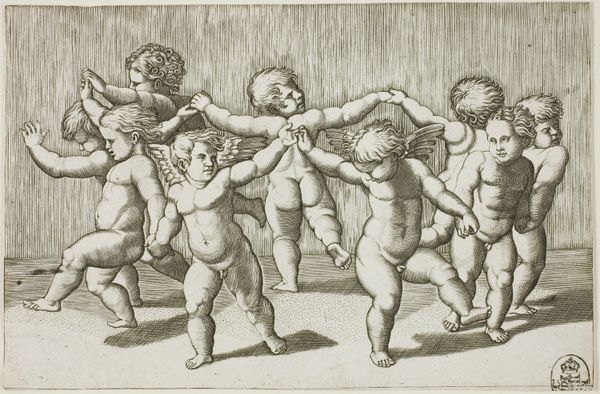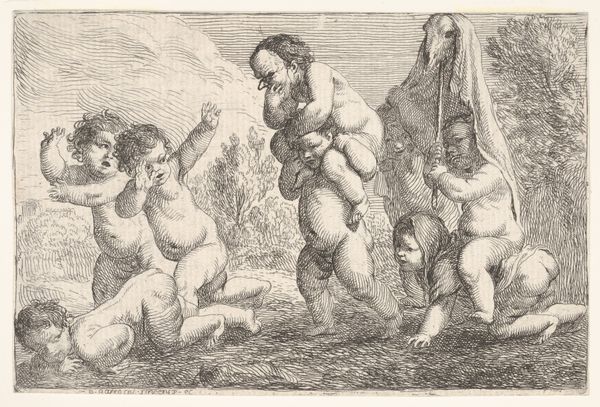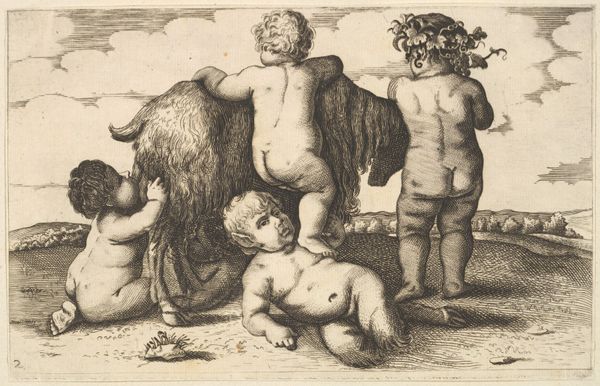
Five boys, two satyrs, and a goat (copy in reverse) 1650 - 1700
0:00
0:00
drawing, print, engraving
#
drawing
#
allegory
#
baroque
# print
#
figuration
#
history-painting
#
nude
#
engraving
#
male-nude
Dimensions: Plate: 5 1/8 × 7 13/16 in. (13 × 19.9 cm)
Copyright: Public Domain
Wenceslaus Hollar produced this etching, “Five boys, two satyrs, and a goat”, in the 17th century, using etching on paper. The image depicts Bacchic revelry, echoing classical themes in a northern European style. But, of course, this is no simple window onto the ancient world. Instead, it is shaped by Hollar's own historical and cultural circumstances. Born in Prague, Hollar spent much of his career in England, working for aristocratic patrons and creating images that circulated widely through print culture. Consider the politics of representing the classical past. What did it mean to evoke Bacchic themes in the context of 17th-century Europe, with its own religious and political tensions? How did Hollar's prints function within the system of patronage and artistic production of his time? To fully understand a piece like this, we need to go beyond formal analysis and dig into social and institutional history. We might ask, how did images like this contribute to the construction of cultural identity in early modern Europe, and what role did artists like Hollar play in shaping that process?
Comments
No comments
Be the first to comment and join the conversation on the ultimate creative platform.
